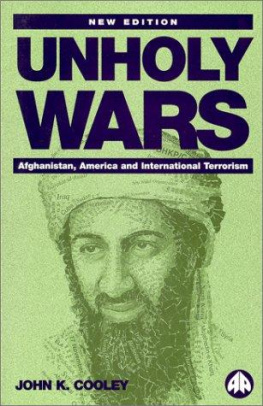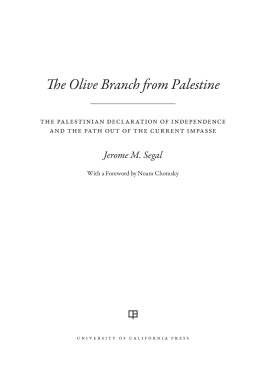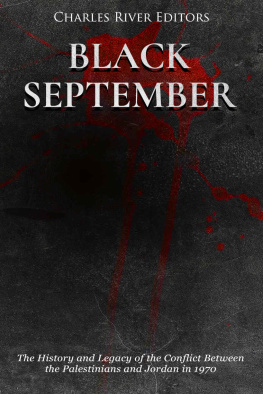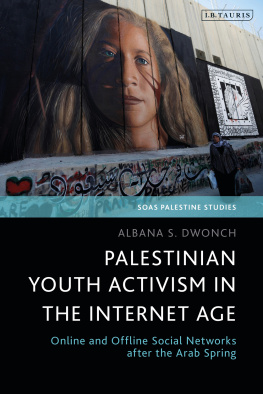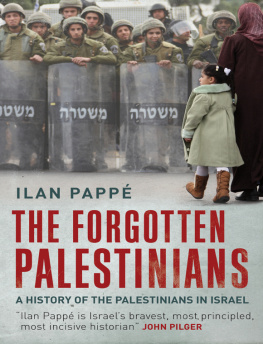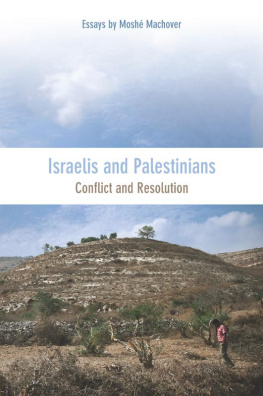ROUTLEDGE LIBRARY EDITIONS: ISRAEL AND PALESTINE
Volume 4
GREEN MARCH, BLACK SEPTEMBER
Green March, Black September
The Story of the Palestinian Arabs
John K. Cooley
First published in 1973
This edition first published in 2015
by Routledge
2 Park Square, Milton Park, Abingdon, Oxon, OX14 4RN
and by Routledge
711 Third Avenue, New York, NY 10017
Routledge is an imprint of the Taylor & Francis Group, an informa business
1973 John K. Cooley
All rights reserved. No part of this book may be reprinted or reproduced or utilised in any form or by any electronic, mechanical, or other means, now known or hereafter invented, including photocopying and recording, or in any information storage or retrieval system, without permission in writing from the publishers.
Trademark notice : Product or corporate names may be trademarks or registered trademarks, and are used only for identification and explanation without intent to infringe.
British Library Cataloguing in Publication Data
A catalogue record for this book is available from the British Library
ISBN: 978-1-138-89267-5 (Set)
eISBN: 978-1-315-69513-6 (Set)
ISBN: 978-1-138-90480-4 (Volume 4)
eISBN: 978-1-315-69596-9 (Volume 4)
Publisher's Note
The publisher has gone to great lengths to ensure the quality of this reprint but points out that some imperfections in the original copies may be apparent.
Disclaimer
The publisher has made every effort to trace copyright holders and would welcome correspondence from those they have been unable to trace.
GREEN MARCH, BLACK SEPTEMBER
The Story of the Palestinian Arabs
John K. Cooley
First published 1973 in Great Britain by
FRANK CASS AND COMPANY LIMITED
67 Great Russell Street, London WC1B 3BT, England
Copyright 1973 John K. Cooley
ISBN 0 7146 2987 1
All rights reserved. No part of this publication may be reproduced in any form or by any means, electronic, mechanical, photo-copying or otherwise, without the prior permission of Frank Cass and Company Limited in writing.
Made and printed in Great Britain by
The Garden City Press Limited
Letchworth, Hertfordshire SG6 1JS
Contents
Maps
" We could make peace with Egypt, but that would not solve thingsfor it is the Palestinians who are the core of our problem."
Arie L. Eliav, former Secretary-General of the Mapai Party.
After nearly ten years of reporting the North African independence movements and the Algerian revolution, and a year's research in New York, I came to the Middle East as the Christian Science Monitor's correspondent in late 1965. As I lived through the events surrounding the Arab-Israel war of 1967, as well as what came before and what has followed, it became my firm conviction that much reporting about the Middle East, both journalistic and scholarly, was missing the point. Neither boundary disputes between Arab governments and Israel, nor 'interim' Soviet-American settlements to open the Suez Canal or solve other side issues were going to bring peace to the Middle East. Only by going to the heart of the matter, the fate and future of the Palestinian Arabs and their relations with Israel, can a solution be approached and eventually found. This book is an effort to show why the Palestine question remains the central one.
In opening, I review the new perspectives raised by King Hussein of Jordan in his programme for a federated PalestineJordan kingdom. After briefly retracing Palestinian history from its beginnings to the present, I have tried to show how the tragic fate and the aspirations of the Palestinian Arabs emerged in their literature and art. Since the Western world has long had a onesided view of them only as miserable refugees, I have mentioned the careers of a few of the Palestinian exiles who have made outstanding contributions to Arab and world society. Inevitably, I have included an account of the main leaders and organizations of those who followed the opposite and harder path of guerrilla warfare, and have tried to show some of the reasons for the brief rise and the subsequent decline of the fedayeen movement. How the Communist states, the Third World and the West reacted to these movements and to Palestinian aspirations in general is followed by a survey of the wide spectrum of Israeli opinion towards the Palestine Arabs as people, enemies, neighbours and a political force. The final chapter offers an approach to a peace solution, drawing what I hope are logical and dispassionate conclusions from what has gone before.
The Israel-Palestine question is so emotionally supercharged that it has been my purpose to keep the viewpoint of the concerned outsider, rather than to take a partisan stand. Besides the work in my daily reporting and comment on the Middle East for the Christian Science Monitor and ABC Radio News, I have drawn on hundreds of published sources, personal interviews, and the experiences and writings of many journalistic and academic friends and colleagues far too numerous to list here.
My special thanks must go to Hanan Mikhail, who took time out from her own labours towards a doctorate to help with research and translations on the recent history and literature of the Palestinians. Acknowledgements are due The Christian Science Publishing Society, publishers of the Christian Science Monitor, for permission to draw on much of the material from my published dispatches, and to the Journal of Palestine Studies in Beirut for their authorization to include the material on China and the Palestinians, much of which appeared in an article in their Winter 1972 issue.
My debt to many people on both sides of the Arab-Israel demarcation lines is indicated in part in the text and the notes. In other cases credit or sources are withheld only because they would betray a confidence or endanger the source, in some cases physically. The encouragement of Patrick Seale and Jane Blackstock in London and the editorial work of Jim Muir were vital factors, as was the patience of Miss Varsi Afarian. She typed the manuscript and saw it through many mutations as the subject went through many dramatic changes even as the book was being written.
The transliteration of Arabic names is a perennial and possibly insoluble problem. I have tried to evade it by choosing, most usually, the journalistic versions familiar to general readers of newspapers and periodicals, except in the Bibliography of Arabic Sources. These may not please some Arabists or other scholars, but I ask for their indulgence.
There may be many Arabs, Israelis and others who disagree either with my premises or my arguments, or both. Their critiques will be welcome, because they should help to stimulate more imaginative approaches to this lingering, chronic and explosive problem of our time. I believe that one can acknowledge the more passionate ingredients of the problem and simultaneously move beyond them to higher ground where one can perceive the distant outlines of a just solution. It is because of this possibility that the book was written.


